Description
SC 1-25 will prepare a commentary reviewing recent epidemiologic studies and evaluate whether the new observations are strong enough to support or modify the linear nonthreshold (LNT) model as used in radiation protection today. The major recent studies, within the past 5 y, will be reviewed and strengths and limitations discussed, similar to the recent UNSCEAR (2013) annex coverage of childhood exposures to computed tomography (CT) exams and risks. While a comprehensive evaluation of LNT is not feasible within the 15 month time frame, the Committee will address briefly current understanding of new radiation biology. The commentary will be in support of the ongoing CC 1 report, Radiation Protection Guidance for the United States.
Goal
To prepare a commentary reviewing recent epidemiologic studies and evaluating whether the new observations are strong enough to support or modify the linear nonthreshold (LNT) model as used in radiation protection today.
2016 Accomplishments
- On April 8, 2016 Committee members were provided the first draft of the commentary, which contained all sections that had been written. The Committee met at the Hyatt Hotel the afternoon of April 12 and morning of April 13 to review the report. The Committee critiqued each section keeping in mind that the commentary should be kept relatively short. Following the conference call, the Project Planner was updated to show the sections completed. Subsequent to the meeting, most sections were revised by mid-May.
- A third teleconference was held on May 24 to review the revised draft. With the amount of literature that needed to be reviewed, several sections were still unwritten. Authors of those sections intended to complete their sections prior to the next teleconference call. Committee members agreed to consider the length of each section compared to others aiming for consistency and to consider how to increase or decrease the length of each section as appropriate.
- During the summer months, Committee members revised their sections to accommodate suggestions from the May 24 conference call. A fourth teleconference was held on August 9 to review those revisions. The Committee discussed recently published literature and reviewed the draft in detail. Considerable effort had been expended on digesting literature appropriate to the dosimetry and statistics sections. The strength of the report will rely heavily on epidemiological studies that have strong dosimetry and statistics. The Committee discussed additional needs of the report, overall structure, upfront matter, and suggestions for reducing the length of the report. Committee members submitted revisions by September 16, and Draft 3 of the report was produced. The two co-chairs of the Committee spent the months of October and November going through the report in detail, reorganizing the placement of sections, revising content to improve consistency, and reducing the length of the report. In early December the various sections of the commentary were sent to respective authors for a final review of their chapters in preparation for outside expert review in early 2017.
Prior Accomplishments
PAC/expert review completed in the first quarter of 2017
Scheduled Activities
Council review is anticipated in the third quarter of 2017
Support
U.S. Nuclear Regulatory Commission
Membership
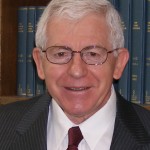
ROY E. SHORE
was a Professor and Chief of the Epidemiology Division at New York University Grossman School of Medicine before going to the Radiation Effects Research Foundation in Hiroshima-Nagasaki as Vice Chairman and Chief of Research. He is an author of over 100 radiation-related publications. He has served on numerous governmental and scholarly committees, including as a long-time member of the International Commission on Radiological Protection and NCRP, and has served on various committees or task groups for the United Nations Scientific Committee on the Effects of Atomic Radiation (UNSCEAR), the World Health Organization, the National Academy of Sciences, the National Cancer Institute, and the U.S. Environmental Protection Agency, among others. Most recently, he evaluated the projected health effects of the Fukushima radiation accident for UNSCEAR. His interests include the effects of radiation on both cancer and noncancer disease incidence, and understanding the epidemiologic and biological modification of radiation effects by various environmental, genetic and age factors. Recent publications have particularly focused on the effects of low-dose and low dose-rate radiation. |

LAWRENCE T. DAUER
is an Attending Physicist in the Departments of Medical Physics and Radiology at Memorial Sloan Kettering Cancer Center and serves at their Corporate Radiation Safety Officer. He serves as a member of the Nuclear and Radiation Studies Board of the National Academy of Sciences, Engineering and Medicine. He is a former Board member and current Council member of NCRP and is the Scientific Director of the Million Person Study. He has served as Chair or Co-Chair on several NCRP scientific committees associated with radiation protection of workers, patients, and members of the public. He served 7 y on the International Commission on Radiological Protection Committee 3, Radiation Protection in Medicine. |
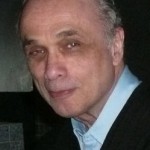
HAROLD L. BECK was a physicist for the U.S. Department of Energy (DOE)/ERDA/Atomic Energy Commission for over 36 y. Mr. Beck retired in 1999 as the Director of the Environmental Science Division of the DOE Environmental Measurements Laboratory (EML) in New York City and is presently a self-employed consultant specializing in environmental radiation dose reconstructions. During his tenure at EML, he also served as Director of the EML Instrumentation Division, and as Acting Deputy Director of the Laboratory. Mr. Beck has authored well over 100 publications in the areas of radiation physics, radiation measurement, dose reconstruction, environmental radiation, and radiation dosimetry. He served as Scientific Vice President for Radiation Measurements and Dosimetry of NCRP from 1996 to 2003, and in 2004 was elected to Distinguished Emeritus membership in NCRP. From 2004 to 2006, he served as a member of the National Academy of Sciences, National Research Council (NAS/NRC) Board on Radiation Effects Research /Nuclear and Radiation Studies Board. He currently serves as a member of the U.S. Scientific Review Group, DOE Russian Health Studies Program. He has served as an expert member on a number of NCRP and NAS/NRC scientific studies related to radiation dosimetry and as Chair of two NCRP committees and one NCRP Program Committee. He is a member of the American Association for the Advancement of Science, the American Nuclear Society, and a Fellow of the Health Physics Society. |

Emily A. Caffrey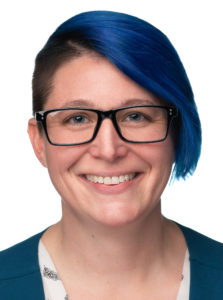
is the Program Director and an Assistant Professor for the University of Alabama at Birmingham’s Masters in Health Physics program. She also serves as a scientific consultant to Risk Assessment Corporation. In addition to her consulting and academic roles, she is the Editor in Chief of the Health Physics Society’s (HPS) “Ask The Experts,” the society’s most successful public information and outreach endeavor. Dr. Caffrey also serves on the HPS Program Committee, which develops and manages the technical program of the society’s meetings. She has a BS in Nuclear Engineering and a PhD in Radiation Health Physics and Statistics from Oregon State University (OSU). She is also a Certified Health Physicist. Her areas of expertise include dosimetry, statistics, data management and interpretation, and public communication. She is a recipient of the HPS Elda E. Anderson Award for outstanding early career health physicists. In 2019 she was selected as one of 10 recipients of Oregon State’s Council of Outstanding Early Career Engineers. This award is reserved for Oregon State Alumni who have distinguished themselves through professional practice, service to OSU, the profession, or society at large. |
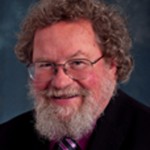 Scott Davis Scott Davis |
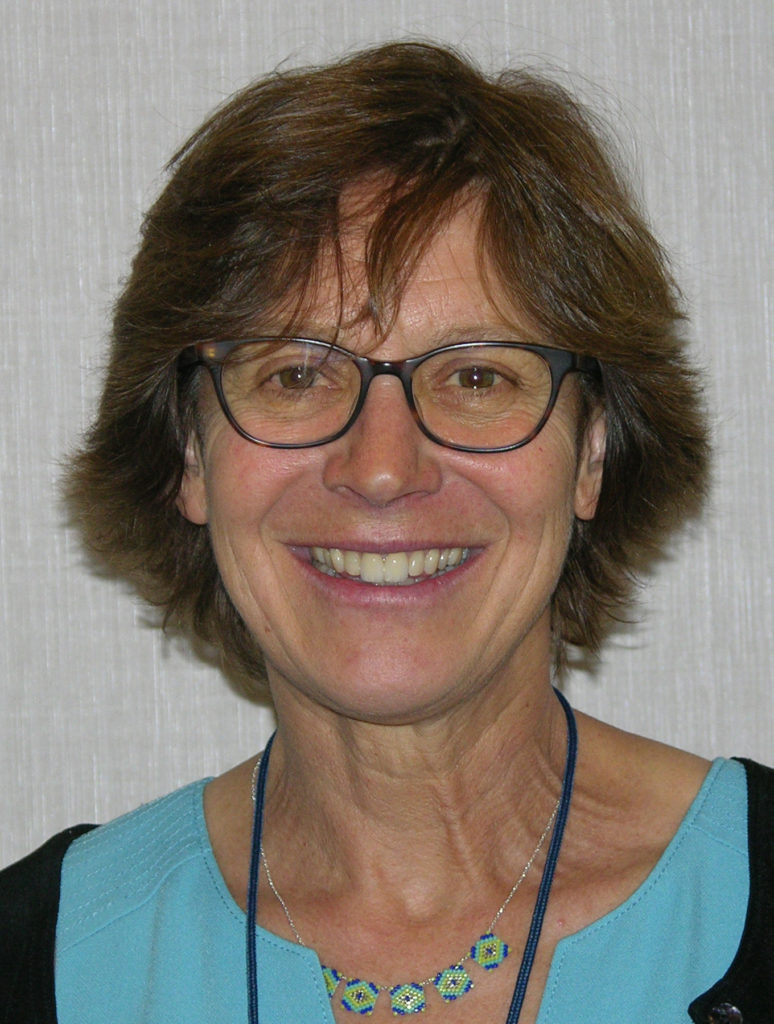
HELEN A. GROGAN
is President of Cascade Scientific, Inc., an environmental consulting firm. Dr. Grogan received her PhD from Imperial College of Science and Technology at the University of London in 1984 and has more than 25 y of experience in radioecology, environmental dose reconstruction, and the assessment of radioactive and nonradioactive hazardous wastes. She first worked at the Paul Scherrer Institute in Switzerland on the performance assessment of radioactive waste disposal for the Swiss National Cooperative for the Disposal of Radioactive Waste (Nagra). Dr. Grogan was actively involved in the early international cooperative efforts to test models designed to quantify the transfer and accumulation of radionuclides and other trace substances in the environment. Validation of computer models developed to predict the fate and transport of radionuclides in the environment remains a key interest of hers. In 1989 Dr. Grogan returned to the United Kingdom as a senior consultant to Intera Information Technologies before moving to the United States a few years later, where she has worked closely with Risk Assessment Corporation managing the technical aspects of a wide variety of projects that tend to focus on public health risk from environmental exposure to chemicals and radionuclides. Dr. Grogan has served on committees for the National Academy of Sciences, the International Atomic Energy Agency, the U.S. Environment Protection Agency, and NCRP. She co-edited the text book Radiological Risk Assessment and Environmental Analysis published by Oxford University Press in July 2008, and authored the chapter on Model Validation. |

Randall N. Hyer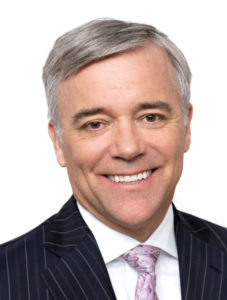
has over three decades’ experience in high-concern, low-trust public communications. He advises the National Academy of Sciences, Engineering and Medicine, lectures at Harvard University, and advises/educates both individuals and organizations on how to implement best practices in risk and crisis communication. His diverse experience covers disease outbreaks, nuclear emergencies, natural disasters, outbreak investigations, product safety concerns, reorganizations and downsizing, budget cuts, rogue employee mitigations, health hazard evaluations, and strategic communications. As the Senior Vice President for Global Medical at Moderna, Dr. Hyer helped develop, communicate, and manage the global rollout of the Moderna COVID-19 mRNA vaccine. In 2017, he was pivotal in engaging the scientific, medical and policy communities to achieve Food and Drug Administration approval of a new adult hepatitis B vaccine (HEPLISAV-B®), the first vaccine using a truly novel adjuvant. Board-certified in general preventive medicine and public health, Dr. Hyer earned his MD from Duke and trained at Walter Reed Hospital and Harvard. He received the PhD from the University of Oxford researching the genetics of juvenile diabetes. His studies won the National Institutes of Health "Outstanding Research Award for Clinical Trainees" and are widely cited. At Oxford University, Dr. Hyer founded the biotechnology company, Alpha-Plus DNA. He also served as a U.S. Congressional Fellow for Senator Pete V. Domenici (R. -NM). Dr. Hyer helped introduce legislation to safeguard genetic privacy that eventually became the Genetic Information Non-discrimination Act (GINA) of 2008. Dr. Hyer graduated with Distinction from the U.S. Naval Academy. Rising to the rank of Commander, his naval service included four major military combat operations in Europe and southwest Asia as well as three major complex humanitarian emergencies with Kosovo relief, Mozambique flood relief, and the Indian Ocean tsunami. Dr. Hyer also served as the Winter-Over Medical Officer at the McMurdo and South Pole Stations, Antarctica as the sole physician. At the World Health Organization (WHO) in Geneva, Dr. Hyer served as a Medical Officer and Military Liaison. Among other duties, he helped facilitated the WHO response to various crisis such as anthrax, Ebola, the 2003 SARS outbreak, tsunamis, earthquakes, and pandemic influenza. Dr. Hyer’s perspectives and contributions span his residing in eight and travelling to 100 plus countries in diverse roles across the public and private sectors. |
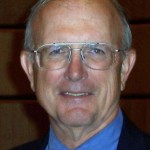
FRED A. METTLER, JR. is currently Professor Emeritus and Clinical Professor at the Department of Radiology at the University of New Mexico School of Medicine. He was chairman of the department for 18 y from 1994 to 2003. He is currently in the Radiology and Nuclear Medicine Service at the New Mexico Federal Regional Medical Center. He graduated with a BA in Mathematics from Columbia University and in 1970 he received his MD from Thomas Jefferson University. He performed a rotating internship at the University of Chicago and subsequently completed a Radiology and Nuclear Medicine Residency at Massachusetts General Hospital. He received an MS in Public Health from Harvard University in 1975. He is a fellow of both the American College of Radiology and the American College of Nuclear Physicians. He is board certified in both radiology and nuclear medicine. Dr. Mettler has authored over 360 scientific publications including 20 textbooks, and holds four patents. The books are on Medical Management of Radiation Accidents, Medical Effects of Ionizing Radiation and Radiology and Nuclear Medicine. He was a Scientific Vice President of NCRP and remains a member. He has chaired several committees for the Institute of Medicine/National Research Council and is a member of the Nuclear and Radiation Studies Board of the National Academies. He is also an academician of the Russian Academy of Medical Sciences. Dr. Mettler has been listed in "The Best Doctors in America" since 1994 as an expert in both nuclear medicine and radiation injury. He has been a certifying examiner for the American Board of Radiology for 30 y. He was the United States Representative to the United Nations Scientific Committee on the Effects of Atomic Radiation 28 y. He is an Emeritus Commissioner of the International Commission on Radiation Protection (ICRP). He was the Health Effects Team Leader of the International Chernobyl Project. He has served as an expert on radiation effects and accidents for the Centers for Disease Control and Prevention, the World Health Organization, the International Atomic Energy Agency, the International Agency on Research on Cancer, and for the Costa Rican, Peruvian, Panamanian, Polish governments. He was a co-author of the NCRP and ICRP reports on radiation protection during radiological terrorism and has been a member of multiple subgroups on radiological terrorism for the U.S. Department of Homeland Security. He is currently a health advisor to the Japanese Cabinet for the Fukushima nuclear disaster. |

R. JULIAN PRESTON
is currently a Special Government Employee (Expert) with the Radiation Protection Division of the U.S. Environmental Protection Agency (EPA). He was previously the Associate Director for Health for the National Health and Environmental Effects Research Laboratory of EPA. He also served as Director of the Environmental Carcinogenesis Division at EPA and as senior science adviser at the Chemical Industry Institute of Toxicology. He has been employed at the Biology Division of the Oak Ridge National Laboratory and has served as Associate Director for the Oak Ridge-University of Tennessee Graduate School for Biomedical Sciences. Dr. Preston's research and current activities have focused on the mechanisms of radiation and chemical carcinogenesis and the approaches for incorporating these types of data into cancer risk assessments by integrating epidemiology and radiation biology. Dr. Preston currently serves on NCRP committees and as a member of the National Academy of Sciences (NAS) Nuclear and Radiation Studies Board. He was recently a member of an Office of Science and Technology Policy Committee on Low Dose Radiation Research. He was also recently co-chair of an NAS Committee for a National Aeronautics and Space Administration sponsored project on revising dose limits for astronauts. Dr. Preston was chair of Committee 1 of the International Commission on Radiological Protection (ICRP), a member of the ICRP Main Commission, and the Representative and a member of the U.S. delegation to the United Nations Scientific Committee on the Effects of Atomic Radiation. He served as Chair for the National Research Council's Committee to Assess the Scientific Information for the Radiation Exposure Screening and Education Program and on the Task Group on the Biological Effects of Space Radiation. He is an associate editor of Environmental and Molecular Mutagenesis. Dr. Preston has had more than 250 peer-reviewed papers and chapters published. He received his BA and MA from Peterhouse, Cambridge University, England, ingenetics and his PhD from Reading University, England, in radiation genetics. |
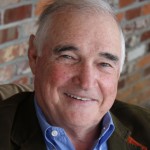
JOHN E. TILL is president Risk Assessment Corporation (RAC) (www.racteam.com). He graduated from the U.S. Naval Academy 1967. He served in the U.S. Navy Nuclear Submarine Program and retired a Rear Admiral in the U.S. Naval Reserve in 1999. As a reserve flag officer he served as Deputy Commander Submarine Force Atlantic Fleet and Deputy Commander US Strategic Command and Commander Naval Reserve Readiness Command Region TEN. He is a recipient of Department of Defense Distinguished Service Medal, the Legion of Merit, two Navy Meritorious Service Medals, two Navy Commendation Medals, and the Navy Achievement Medal. Following his active duty service, Dr. Till received his MS degree from Colorado State University in 1972 and his PhD degree from the Georgia Institute of Technology in 1976. In 1977 he formed RAC. Since its formation RAC has played a key role in our understanding of radioactive materials when they enter the environment and how they affect humans. He has been responsible for major historical dose reconstruction projects at U.S. Department of Energy (DOE) facilities including Hanford, Washington, Fernald, Ohio, Rocky Flats, Colorado, the Savannah River site, and Los Alamos National Laboratory. Working with Vanderbilt University and National Cancer Institute, Dr. Till’s team developed the first in-depth dosimetry from exposures to military personnel who participated in the atmospheric testing of nuclear weapons between 1945 and 1963. Working with epidemiologists, Dr. Till team of researchers is enabling us to better understand if there is a higher incidence of cancer among this group of over 114,000 veterans. In 1995, Dr. Till received the E.O. Lawrence Award from DOE in the field of Environmental Science and Technology. He was selected for this honor for his work in public involvement and research in dose reconstruction. He was presented the L.S. Taylor Medal and presented the Taylor Lecture at the annual meeting of NCRP in 2013. In 2020, he received the Health Physics Society’s Distinguished Scientific Achievement Award. Dr. Till’s scientific achievements include over 200 scientific publications and books that stress new approaches to apply and simplify transport and fate mechanisms in environmental and risk analysis. His most recent book, Radiological Risk Assessment and Environmental Analysis was published by Oxford University Press. He served on the International Commission on Radiological Protection (ICRP) for 12 y and worked with the International Atomic Energy Agency on various regulatory reports. He is a Distinguished Emeritus Member of NCRP and has served on and chaired various committees of the National Academy of Sciences. |
 Richard Wakeford Richard Wakeford |
 Linda Walsh Linda Walsh |
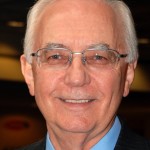
RICHARD J. VETTER is Professor Emeritus and former Radiation Safety Officer at the Mayo Clinic in Rochester, Minnosota. He received his BS and MS degrees in Biology from South Dakota State University and his PhD in Health Physics from Purdue University. He is board certified by the American Board of Health Physics and the American Board of Medical Physics. He served on the Purdue University faculty from 1970 to 1980 and the Mayo Clinic staff and faculty from 1980 to 2010. Dr. Vetter is a member of the National Academies Nuclear and Radiation Studies Board, the Government Liaison for the Health Physics Society (HPS), and a member of the Executive Council of the International Radiation Protection Association. He is a Fellow of HPS and the American Association of Physicists in Medicine and received the HPS Founders Award. He is past Editor-in-Chief of Health Physics, past president of HPS, past president of the American Academy of Health Physics, and author or coauthor of more than 220 publications, books, book chapters, and other articles. He served as Vice Chair of the U.S. Nuclear Regulatory Commission Advisory Committee for Medical Uses of Isotopes and member of the Radiation Advisory Committee of the U.S. Environmental Protection Agency Science Advisory Board. He served on the Board of Directors of NCRP, Chair of the NCRP Nominating Committee, and Chair of three and member of two NCRP scientific committees resulting in four NCRP reports and one NCRP statement. Dr. Vetter has received outstanding alumnus awards from South Dakota State University, the Purdue School of Pharmacy and Pharmacal Sciences, the Purdue School of Health Sciences, and the Purdue College of Health and Human Sciences. |




 News & Events
News & Events